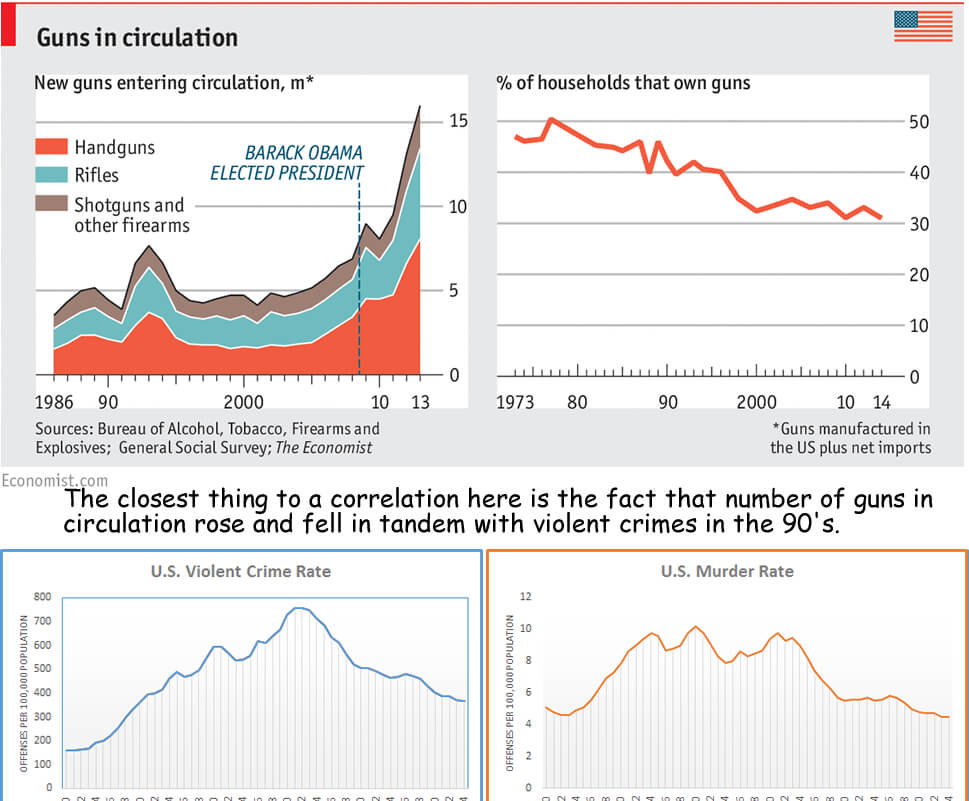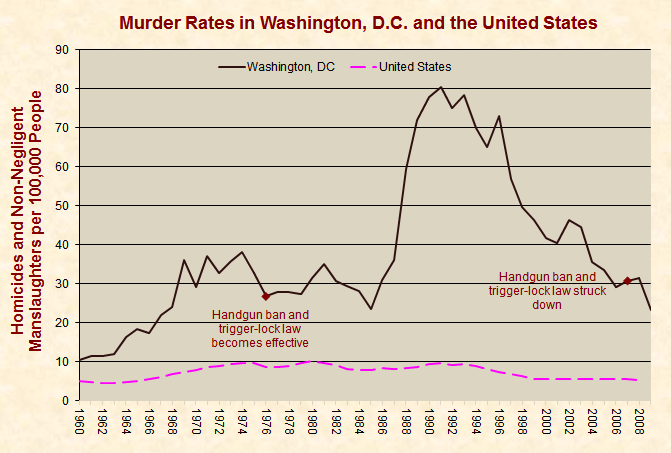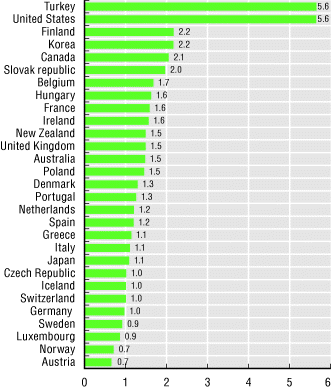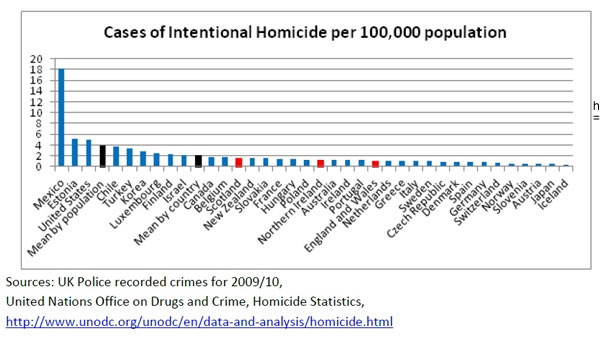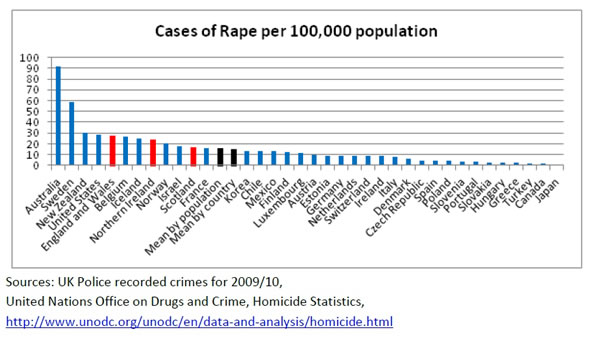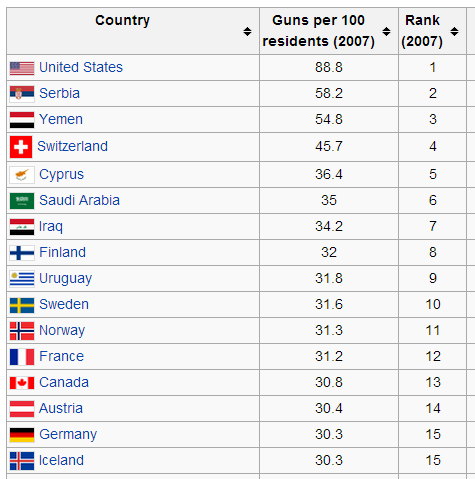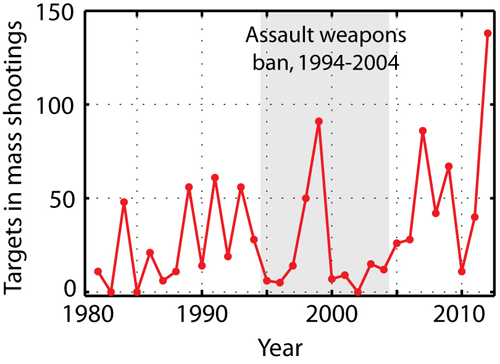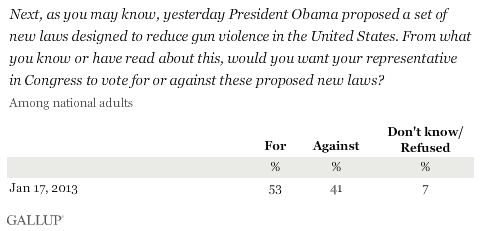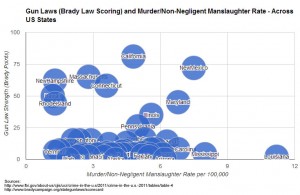The gun control debate is an interesting one as both ‘sides’ have a wealth of stats they can cherry pick from in order to make their case. However, it would appear that the self-ascribed “pro-gun” crowd (a bit misleading because it implies that any argument for tighter gun control or regulation makes a person “anti-gun”) amounts to a plethora of really bad arguments that encompass a wealth of standard fallacies that are repeated time and again. These “anti-gun control facts” run the entire gamut; from logical fallacies and factual errors. The recent and unfortunate mass shooting at Marjory Stoneman Douglas High School in Parkland, Florida has reignited the debate, and the same false claims have made their way back onto the internet.



Anti-gun control facts and keeping the “gun control debate” in context



In all of this back and forth over the alleged effects of stricter vs looser gun control, it’s important to keep in mind what’s being debated: current levels of gun control vs. slightly higher levels of gun control (not unfettered access to any and all firearms vs. an outright gun ban). This is important to keep in mind because opponents of increased gun control often mistakenly frame the debate as “the right to own firearms vs no right to own firearms.” This is a bit of straw man as support for an all-out gun ban has almost no support (the right to bear arms is firmly established in the US constitution) and that is not what is being proposed.
Most of these laws actually have strong support from typical gun owners: stronger background checks, help for people with certain mental disorders, and a ban on specific guns considered by law enforcement to fall under a class of “assault weapons” and magazines of a certain size capacity. Law abiding citizens are not being stripped of their rights to defend their homes. These laws would not affect their ability to purchase handguns, shotguns, and rifles, nor are anyone’s weapons being “confiscated” (“assault weapons” included). In fact, many of the laws being discussed already exist in states like CA, and they would simply be adopted nationwide.
“Anti-gun control facts”
“There are more and more guns in the United States, yet violent crime continues to drop”
Technically, it is true that the sheer number of guns in the US has continued to climb. However, the rate of households and individual gun owners continues to drop (in other words, the sheer number is rising largely because gun owners are buying more guns, not because we are seeing a huge increase in gun owners). So rates of gun ownership aren’t actually increasing. Rather, individuals with guns appear to own more and more of them.
Analysis: Fewer U.S. gun owners own more guns
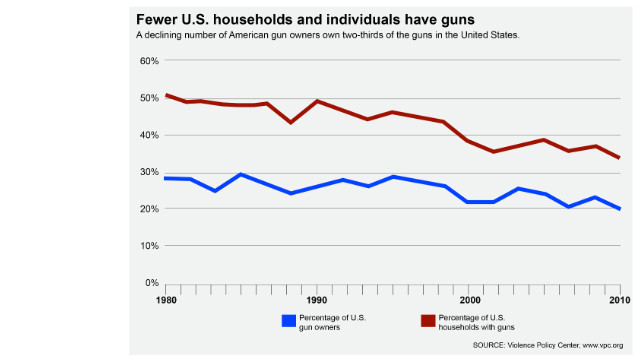
What’s more is that violent crimes actually rose and fell in tandem with the number of guns in circulation in the 90’s. The number of guns in circulation would begin to rise again in the mid-2000’s while violent crime continued to decrease.
Criminals don’t obey laws
The statement that “criminals don’t obey laws” is often offered as a “reason” why gun laws “won’t work.” It’s an overly simplistic argument that assumes that all criminals (and/or potential criminals) react the same way to the same variables. It also makes no distinction between types of criminals and their (and/or potential criminals) motives. Following this logic, there is no point in having any laws (murder, theft, rape) since apparently, they will have no effect on those activities.
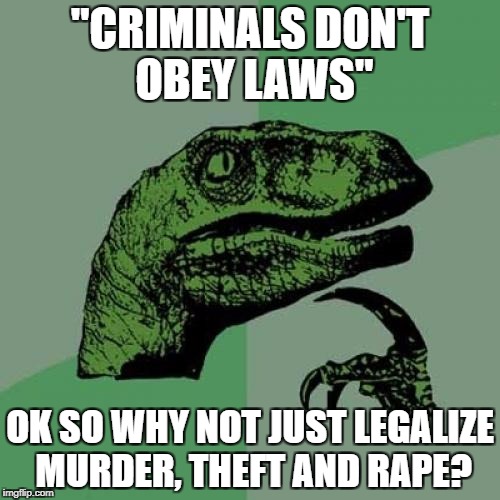



Laws offers a deterring effect for criminal activity. While it obviously doesn’t deter every criminal activity it no doubt suppresses the activity. One way to test this would be to legalize a violent criminal activity and see if that particular activity increases. However, it’s unlikely that even the “criminals don’t obey laws” crowd will find this to be a good idea.
“No law will stop a determined gunman”
Similar to the “criminals don’t obey laws” argument, is the claim that “no law will prevent a determined gunman” (or any criminal for that matter). While it’s true that the more determined (and intelligent) the potential gunman, the less likely laws will prevent their intended activity, it doesn’t follow that every would-be gunman is so determined and forward-thinking.
In fact, these carefully-planned shootings are the exception, not the rule. Laws that don’t prevent carefully planned acts of violence (the exception) may still prevent less carefully planned or random acts of violence. Following the “no law will prevent a determined gun man” logic, there is no point in locking one’s doors at night, since locks won’t stop a determined (and expert) intruder. It’s unlikely that even the “no law will prevent a determined gunman” crowd is willing to leave their car and house doors unlocked.
“No law can stop mass shootings” or “which law could have stopped THIS shooting?”
In response to mass shootings, opponents to gun law reform claim that none of the proposed laws would have prevented the latest shooting, and cite this as evidence that gun laws don’t work. One problem with this is that, when it comes to gun deaths, mass shootings are only a small fraction of the death toll. Certain proposed laws may still reduce gun deaths for the majority of these instances.
Furthermore, it’s entirely possible that existing laws HAVE prevented would-be mass shootings. It’s entirely possible that people who would have eventually committed a mass shooting have been prevented from obtaining a gun (or guns) or have otherwise been arrested and detained.
Furthermore, after years of unfortunate mass shootings, the shootings that have claimed the most lives have been in states with less restrictive gun control. For example, the deadliest shootings in the last decade are mostly from states that receive a poor Brady rating. In fact, the worst four mass shootings take place in States that rank in the Brady Campaign’s “Top 15 Criminal’s Choice States.”
“The Australian buyback program didn’t work. Homicides are still increasing!”
This disingenuous claim uses absolute numbers instead of using per capita. Like most counties, Australia’s population continues to grow and because of this, so do many other sheer numbers. This is why economists and social scientists tend to use per capita instead of absolute numbers. If homicides in Australia increased by 5% over a given period but its population increased by 15% in the same period, that is technically a decrease as a percentage of the population. Unfortunately, those who simply cite the “increase in homicides after the Australian gun buyback” either don’t understand this or are willfully misreading their audience.
Irrelevant or False Regional Situations or Correlations
“Chicago and Washington DC have/had handgun bans and their homicide rates are off the charts”
Known for its crime rate, Chicago has commonly used in pro-gun arguments statistics with the assumption that its strong gun laws prove that these restrictions don’t work. However, Chicago was known as a crime capital since the 1960’s/1970’s. The handgun ban didn’t happen until the 1980’s. In reality, cities with very high crime rates tend to ban handguns (not the other way around). Those who make this argument are confusing cause and effect. Needless to say, things like poverty and urban density need to be taken into account, but many in the anti-gun control crowd care little for outside factors in this case.
As you can see there is little correlation between Washington DC’s handgun ban and its murder rates–which rose and fell within the time frame of its handgun ban. And even though the significant rise in murder rates rose 10 years after the ban, and started falling about 14 years before the ending of the ban, opponents to gun laws will blame the ban for the rise and credit its repeal for its fall. See Just Facts for more graphs like this.
“In Mexico, guns are illegal and look at all of the gun violence there.”
First, it should be noted that guns are NOT illegal in Mexico (for some reason this gets repeated often, but it is not true). See Gun politics in Mexico
Another anti-gun control fallacy here is that the proponents of these arguments are using a developing country as their example. Comparing developed countries to one another gives us a different picture. It’s clear that the US (which has the loosest gun laws among developed nations) is off the charts in terms of gun deaths. So international stats don’t bode well for gun regulation opponents (unless they stick to using undeveloped or developing nations to make their point–and that’s a pretty low baseline to use). Many gun control opponents counter that in other countries, similar deaths occur but with other weapons. However, murder rates are also higher in the US. This also leaves little room to use stats to argue that loose gun restrictions make it easier for murder victims to defend themselves against attempted murders/homicides (at least enough to offset the increased murders/homicide attempts they face under looser gun laws).
Firearm-Related Deaths in the US and a few other Countries
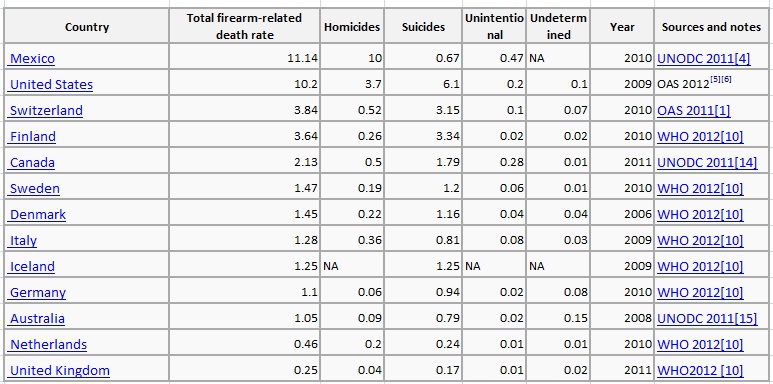 http://en.wikipedia.org/wiki/List_of_countries_by_firearm-related_death_rate
http://en.wikipedia.org/wiki/List_of_countries_by_firearm-related_death_rate
Murder Rates in the US and other countries
Intentional Homicide and Rape? The US also ranks #1 or close to #1 among developed nations. Keep in mind, these are the crimes that anti-gun control sources claim our high gun ownership helps prevent. It’s also worth noting that that Nordic nations have high rates when it comes to rape. Many anti-gun law activists cite the Nordic countries as a high gun owning havens (at least by European standards) and note their relatively low homicide rates as evidence that higher gun ownership suppresses homicide. On the other hand, also using rape as a leading reason for loose gun restrictions (to help women offset the size/strength advantage of men) makes the high rate of rape in these countries result in an awkward contradiction.
A scatter plot of OECD countries showing their relationship between intentional homicides and gun freedom index does reveal an overall correlation between lower rates of intentional homicide and “lower gun freedom.”
Mexico, whose gun freedom index puts it at more or less at the center of the pack is in a league of its own in regards to homicides. This is why simply comparing the US and Mexico is convenient for those arguing against the efficacy of gun control legislation. However, beyond a mere US-Mexico comparison, the overall OECD stats show lower homicides alongside higher gun control.
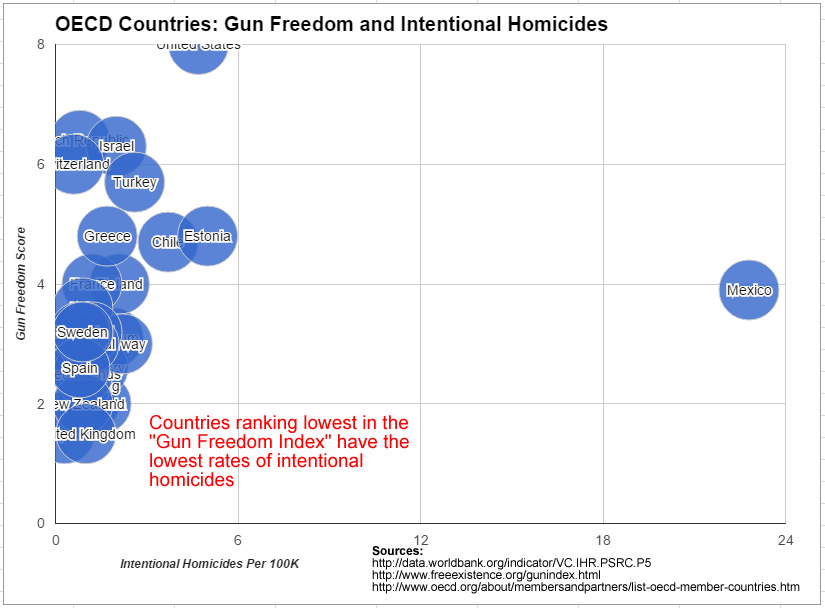
“But the UK/England has more violence than the US!”
One of the talking points we hear often is the claim that England has more “violent crime” than the United States and other countries in Europe. Generally, this is intended as a talking point to counter England’s lower homicide rates. There is one problem, what’s considered a “violent crime” is not the same in England as it is in the United States. In England, even an affray is considered a “violent crime.” Here in the US we generally associate “violent crime” with an actual physical injury.
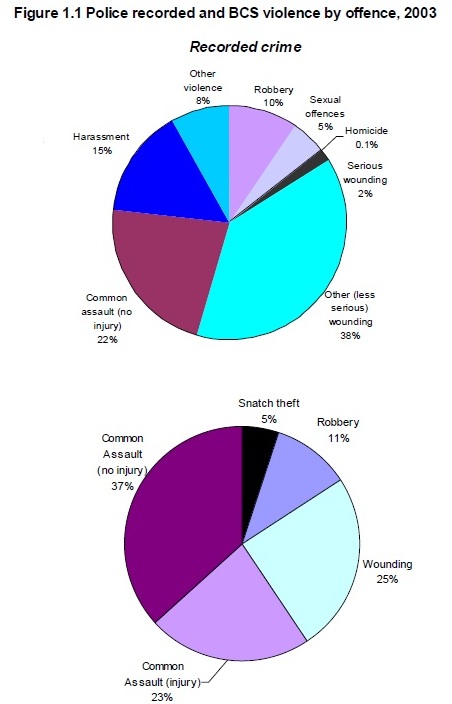
From Violent Crime in England and Wales
Seriousness and injury
• The majority of incidents categorised as violent crime involve no significant physical injury to the victim, although they can still be extremely traumatic experiences.
• In 48 per cent of all BCS violent incidents there was no injury, rising to 62 per cent and 63 percent for common assault and robbery respectively (year ending December 2003 interviews).
• There was no injury in at least 51 per cent1 of all recorded violence against the person
offences in 2003 (Table 1a).
• At the other end of the spectrum, the more serious offences within violence against the person accounted for five per cent of recorded violence in the year to December 2003 (Table 1a).
• Eleven per cent of BCS violent incidents, from 2002/03 BCS interviews, resulted in medical attention from a doctor. Two per cent of all BCS violent incidents resulted in a hospital stay, ranging from six per cent of wounding victims to one per cent of robbery victims (Simmons and Dodd, 2003).
Anti-Gun Control Either-Or Fallacies
This sort of fallacy assumes we have to choose between two mutually exclusive options. For example:
“More people die from (insert cause of death here) than guns.”
or
“The REAL problems is (insert sociological/psychological/societal problem (violent TV/video games, medication, lack of morals, etc) here)”
While there are certainly other, more prominent causes of death as well as a number of factors that lead people to commit a violent crime, the idea that we shouldn’t pass stronger gun laws because of these other factors is simply wrong. Perhaps violence is too glorified and there are too many people suffering from anxiety or depression–but stronger background checks can help lawmakers lessen the likeliness of mentally unstable people or ex-felons from obtaining a firearm.



Furthermore, there are laws and restrictions for many of these other potential causes of death. Take the activity of driving (a favorite among the anti-gun law advocates) for example. Not every conceivable vehicle is street legal. There are certain requirements that must be met, along with a yearly registration. Not everyone can drive. We have driver’s license tests and frequent renewals. And people don’t get to drive however they want. There are speed limits and other traffic laws to obey.
In both cases (owning vehicles and guns) there are certain requirements, limitations, and regulations. It’s a matter of how far we go to regulate these things. Furthermore, guns are specifically designed to kill, whereas vehicles are designed for transportation but can also kill due to the laws of physics. So while the aggregate number of deaths due to vehicles is higher, this is due to our far more common exposure to them in our everyday transportation uses.
It should also be noted that there are advocates for doing something about many of these other problems. There are people trying to ban violent TV/video games. There are people against drunk driving or the use of anti-depressants. This is again, not an either-or situation.
Anecdotal/Personal Experience
“Every gun I’ve purchased at a gun show required me to go through the usual steps, therefore there’s no such thing as a gun show loophole.”
Personal anecdotes are another popular category of “anti-gun control facts.” We’ve all heard these arguments. Someone will make a general claim based on their own personal experience (which we generally have no way to verify). But the gun show loophole (really a “private seller loophole”) exists. In fact, an investigation showed that gun show re-sellers were selling to buyers who openly admitted they could probably not pass a background check.
Also, some have argued that closing the gun show loophole somehow prevents law abiding citizens from obtaining firearms. But at most, it simply requires that gun show retailers apply the same standards as licensed firearm re-sellers. Licensed firearm re-seller are far more common and accessible than gun shows, so it’s difficult to argue that this somehow hampers law-abiding citizens from obtaining a gun.
Even under the Assault Weapons Ban, people still died
There is actually some evidence that the assault weapons suppressed the number of victims in mass shootings. Nevertheless, opponents of the ban will point to the fact that they “still happened” and ignore the fact that fewer people fell victim under these mass shootings during this time period.
See: A guide to mass shootings in America
Logical Fallacies: Strawman arguments / Non-sequiturs
“Gun Deaths still happen in areas with stronger gun laws, therefore stronger gun laws don’t work.”
Perhaps the most common anti-gun control fact is the straw man argument that assumes stronger gun laws “fail” because they don’t stop gun violence altogether. The reality is that at best, we can hope to curtail/lessen gun deaths, thereby saving some lives. Unfortunately, many “pro-gun” advocates ignore this altogether and want to treat gun laws and gun deaths as a zero-sum game (as if saving thousands of lives over a certain period of time doesn’t matter because you haven’t saved every life).
“There are instances of murders that involve killing numerous people using a knife”
Similar to the above argument, this ignores the fact that gun laws are intended to reduce the number of deaths. Someone can simply do more damage with a gun (and more to the point, with a higher powered rifle that can hold more rounds) than he/she can with a knife. What’s more: there are more options for a person confronted with a knife, like running or defending oneself with an improvised weapon.
This argument also misses a very basic point. There ARE laws on knives as well. There are limits on the type of bladed weapons an individual can carry or even own. The ‘knife’ diversion would be an excellent argument under the context of a gun ban and unfettered access to knives. But this is not the case. We have both knife and gun control laws, and what’s being discussed is tightening gun control laws.
The Government is taking away people’s rights!
Quite often we hear about “the government” as though it’s some alien specter that flies in from en high to impose its will. We forget that these are elected officials that were voted in through majority votes. Guess what? Obama’s new gun policy is showing majority support. It would seem that Obama, as an elected official, is doing what a majority of Americans want him to do. This is the point of our voting process, isn’t it? Sadly, the same people who berate the government for not actually representing the people, berate the government for actually doing what “the people” ask. So what they really complaining about is the fact that government isn’t doing what they personally prefer.

